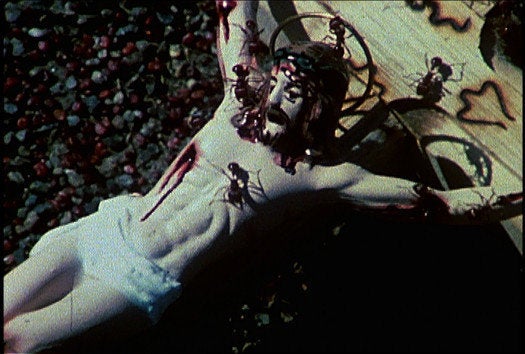
Last December, when the Smithsonian bowed to right-wing pressure and removed a work of art from a National Portrait Gallery exhibition, it prompted a national debate about censorship, free expression, religious freedom, and what remains of government funding for the arts.
This week, the Smithsonian itself will officially, albeit very belatedly, address the debate it caused, holding a two-day forum to explore the issues raised by its removal of David Wojnarowicz's A Fire in My Belly from an exhibit on the gay and lesbian experience in American art. This public discussion is being held far too late -- more than two months after the exhibit in question closed -- but I hope that it will fuel the valuable debate about sponsorship, censorship, and freedom of expression. The Smithsonian first chose censorship, then chose silence. I hope that at this forum, the Smithsonian's leaders will finally get engaged in the discussion that they have until now been avoiding.
But for the Smithsonian's forum to be valuable, the institution must be made to grapple with tough questions. Here are 10 questions that I think should be asked this week and whenever political pressure and free expression principles come into conflict in funding the arts:
- What's next? How will the Smithsonian stop the slippery slope of censorship now that one exhibit has been censored? Hide/Seek's critics wanted the whole exhibit taken down because it recognized and even celebrated gay and lesbian Americans. What if creationists threatened the Natural History Museum's funding over its portrayal of evolution? What if the religious right wanted to eliminate references to the founders' debate about the separation of church and state? Where will you draw the line?
